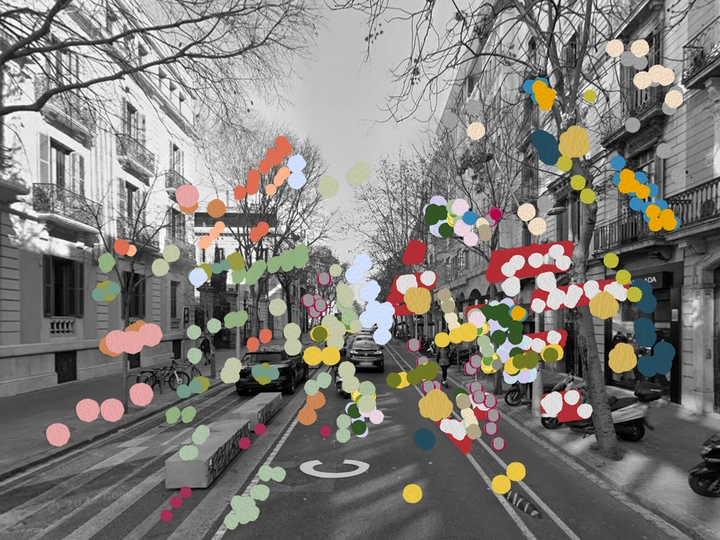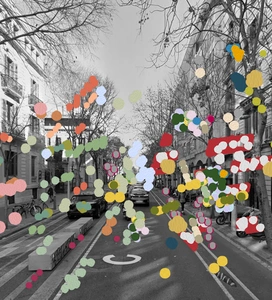Flâneuring around the 21st century city

The first time I set foot in Barcelona’s Architecture School (UPC), a professor made us write on a small piece of paper what had brought us there. Most of my peers spent their childhood building houses and abstract constructions with Lego pieces; this was just the natural path to fulfilling their dreams. My answer was less romantic: the degree skillfully combined math, history, art, and a certain amount of anthropology. “Oh, and I really like cities," I would add. I must admit it, at 18 this seamed a reason enough.
It took a few months into architecture school for me to realize I had landed in the right place. In those first years, I learned how relevant and transversal architecture could be. This love and curiosity for the discipline and its interaction with other fields is what brought me to start “Coses Modernes”, a catalan cultural podcast, with two friends in 2020. Since 2022, it has been part of the cultural newspaper núvol.com (Ara.cat). Over the years, it has allowed me to explore many different subjects, from the housing crisis in most European cities, including Barcelona.
I was invited to publish a few articles on the Fundación Arquia Blog, and I discovered the many ways architecture can also be put into words. The attraction to theory and architectural research solidified during the writing of my final thesis, based on the process of Ronchamp’s conception. I learned the scientific approach to architectural research in the analysis of original documents, letters, and drawings. While studying I have worked as a children’s art teacher, as a film photographer in the Barcelona Pavilion and as an architect in the Muicipal Institute of Urbanism in Barcelona.
I believe that an architectural view of the world is important and necessary, and that is why next September I will continue my academic journey in Columbia’s Masters of Science in Critical, Curatorial, and Conceptual Practices in Architecture.
It's been over a hundred and fifty years since Baudelaire stroled around the streets of Paris, side-looking at Hausmann’s transformation of the city. The fast-changing industrial revolution and its architectural consequences changed the urban landscape forever. Romantics could not help but long for a quieter city life while taking a secret joy in contemplating passionately the multitude. Alone, but accompanied, the flaneur observed from the inside but, at a certain distance, the rapidly changing urban costums.
A century later, Vivian Gornick wanders around New York while mentally revisiting, along with her mother, her childhood memories. As she walks, thoughts start forming, and memories are properly drawn. The constant rhythm and caos of the city help her think. She observes how humans struggle to survive in a city that never sleeps. When she’s at home alone, she experiences “a shock of pleasure as I see the banks of lighted windows rising to the sky, crowding around me, and feel myself embraced by the anonymous gathering of city dwellers. The pleasure it gives soothes beyond all explanation.”
Just like the building of boulevards and the urban-scale construction works of 19th-century Paris changed European city life forever (magesticament captured by Baudelaire and Benjamin), we are now once again experiencing a drastic change in many European city centers. After a hundred years of prioritizing vehicle mobility, pedestrians are now in the spotlight. With projects such as the High Line in New York, the Coulée verte in Paris, or the recently inaugurated Carrer Consell de Cent in Barcelona, the use and understanding of the street is changing.
How do those projects, and others springing through Europe, change a city’s mobility? Can literature capture this new urban essence? Can it be done through other artistic practices? How can urbanism be explained—or rather, felt? What does a 21st-century flâneur look like? Can we all be one?
I stive to answer those questions.
